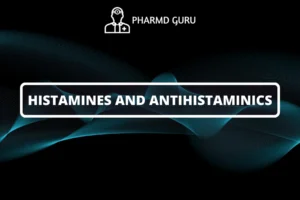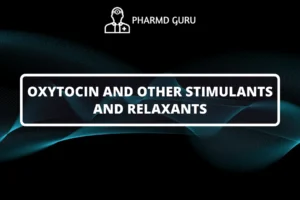Pharmacodynamics is a branch of pharmacology that focuses on understanding how drugs interact with the body to produce therapeutic effects. It explores the mechanisms of action of drugs and their effects on biological systems. Pharmacodynamic studies help healthcare professionals determine the relationship between drug concentration and pharmacological response, providing insights into drug efficacy, safety, and individual variability.
SCROLL DOWN TO THE BOTTOM OF THIS PAGE FOR ACTUAL NOTES.
TABLE OF CONTENTS:
- Introduction
- Drug-Receptor Interactions
- Mechanisms of Drug Action
- Dose-Response Relationship
- Drug Potency and Efficacy
- Variability in Drug Response
- Clinical Applications
Introduction
Pharmacodynamics is the study of how drugs produce their effects on the body. It involves understanding the interactions between drugs and specific receptors or target sites, as well as the subsequent biochemical and physiological changes that occur. By investigating pharmacodynamics, healthcare professionals can better comprehend the therapeutic effects, side effects, and variability in drug response.
Drug-Receptor Interactions
Central to pharmacodynamics is the concept of drug-receptor interactions. Drugs bind to specific receptors in the body, which can be proteins, enzymes, ion channels, or nucleic acids. These interactions initiate a cascade of molecular events that lead to the observed pharmacological response. The affinity and specificity of drug-receptor binding influence the drug’s potency and selectivity.
Mechanisms of Drug Action
Drugs can exert their effects through various mechanisms. Some drugs act by mimicking or blocking endogenous signaling molecules, while others modulate enzyme activity or alter ion channel function. Some drugs may affect gene expression or interfere with cell membrane integrity. Understanding the mechanisms of drug action is crucial for selecting the appropriate drug therapy for specific conditions.
Dose-Response Relationship
The dose-response relationship describes the relationship between the dose of a drug and its pharmacological response. It helps determine the minimum effective dose, maximum response, and therapeutic index of a drug. The shape of the dose-response curve can vary, ranging from linear to sigmoidal, depending on the drug and the target receptor.
Drug Potency and Efficacy
Drug potency and efficacy are important concepts in pharmacodynamics. Potency refers to the dose of a drug required to produce a specific effect. It is influenced by the affinity of the drug for its target receptor. Efficacy, on the other hand, measures the maximum effect that a drug can produce. Some drugs may have high potency but low efficacy, while others may have high efficacy but lower potency.
Variability in Drug Response
Individuals can exhibit variability in their response to drugs. Factors such as age, genetics, co-existing medical conditions, and drug interactions can influence drug response. Pharmacogenomics, the study of how genetic variations affect drug response, plays a crucial role in personalized medicine and optimizing drug therapy for individual patients.
Clinical Applications
Pharmacodynamics has several clinical applications in healthcare. It helps healthcare professionals select the most appropriate drug therapy based on the desired therapeutic effect and the underlying pathophysiology. Pharmacodynamic studies also aid in dose optimization, drug-drug interaction assessments, and predicting potential adverse effects.
ACTUAL NOTES:




